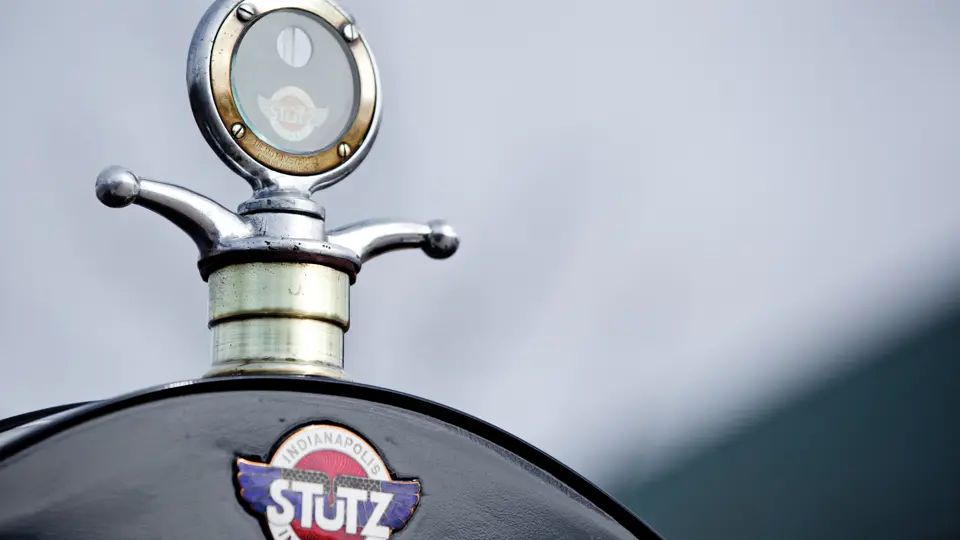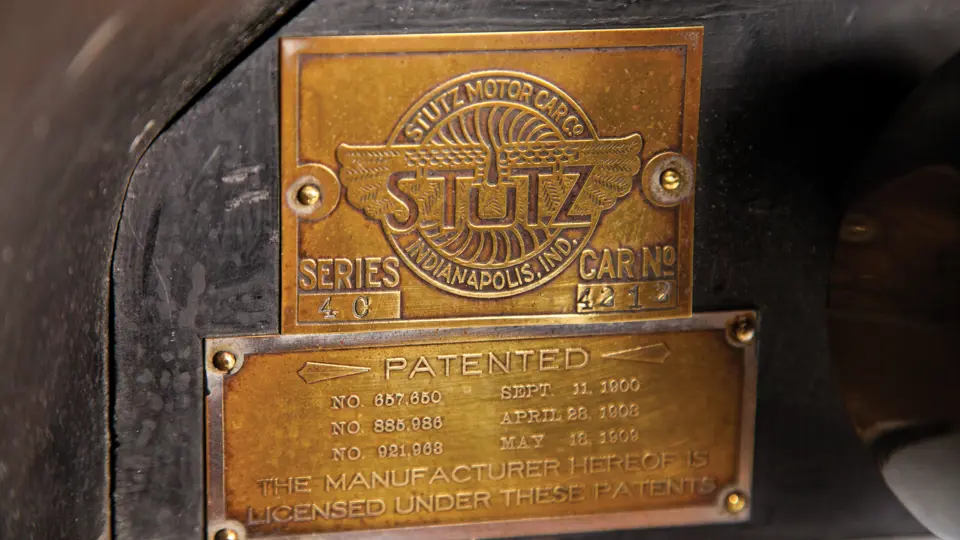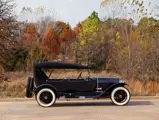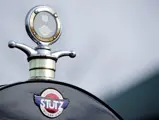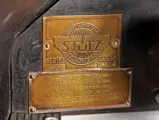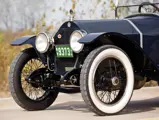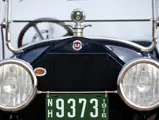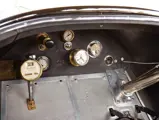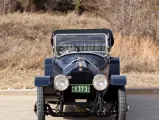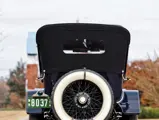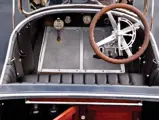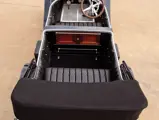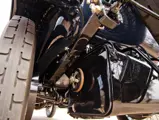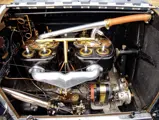Model 4C. 60 bhp, 390 cu. in. T-head four-cylinder engine, three-speed manual transaxle, solid front axle and live rear axle with semi-elliptic leaf springs, and two-wheel mechanical drum brakes. Wheelbase: 130 in.
The Stutz was called the “Car That Made Good in a Day,” and the company had its day on May 30, 1911, when a car designed by Harry Clayton Stutz competed in the inaugural Indianapolis 500. While it did not win—that honor went to Ray Harroun in a Marmon—its 11th place finish, for a car completed just days before the race, was sufficiently remarkable to launch production of the Stutz Model A, and it created one of the world’s most memorable automobile slogans. Most notorious among early Stutz cars was the Bearcat Speedster model, with a massive 390-cubic inch T-head, four-cylinder engine.
Following the Indy performance, Stutz cars campaigned with good results the same year at Fairmount Park in Philadelphia and the Santa Monica road course in California. The year 1912 brought the first win, at Bakersfield, which was followed by two more at San Jose. Earl Cooper took 4th at Santa Monica, presaging a racing career that would extend to 1928 and make his name almost synonymous with Stutz. He won seven of eight major races in 1913, and with Gil Anderson and Howdy Wilcox, he made up the driving contingent of the famed White Squadron racing team from 1915 to 1917.
The White Squadron was comprised of a fleet of specially designed overhead-camshaft, four-valve-per cylinder racing cars that were painted in dazzling white. The drivers and mechanics were similarly attired in white coveralls. The team, handicapped somewhat by Harry Stutz’s insistence on using standard passenger car gearing, nonetheless rolled up an enviable record, with awards for consistency and setting several long-distance records.
Although they were overshadowed by the Bearcat and frequently forgotten, Stutz built roadsters and touring cars from the very beginning, and then sedans from 1915 onward. Most of these, however, had the same Wisconsin four-valve, twin-ignition T-head engine and transaxle gearbox as the Bearcat, with the Bulldog tourer being the case in point. The Bulldog was introduced for 1915, and it was extended in 1916 as the Bulldog Special. The Bulldog Special came with a wheelbase that was extended 10 inches to 130, a wood-finish vanity cabinet in the rear compartment, aluminum trim in the front and rear, and Hartford shock absorbers. Other than the wheelbase and the passenger amenities, it was a Bearcat in every sense. As time passed, few survived intact, as the possibility of cutting them down for Bearcat replicas was entirely too tempting.
This car was among the best of those few intact factory-bodied Bulldog Special survivors when it was found in the 1960s. This Bulldog shows just 29,000 miles, it is understood to be original, and it was treated to a high-quality restoration. It was rewarded with an AACA National First Award in 1962, and this is a badge that it still proudly wears today. In the 1970s, it was sold to James Hanks, of Kentucky, in whose family it stayed until its acquisition by the present owner about six years ago.
In 2009, it was disassembled, repainted in dark blue with grey pinstriping, reupholserted in black leather, and a new black canvas top was fitted. The brightwork was renickeled, the brakes were overhauled, and new tires were mounted. The chassis and drivetrain were detailed, as they required no mechanical work. The car is fully refreshed and presents in excellent fashion. It retains important original elements, including the body and sheet metal, the underhood wiring, and the side curtains and serial number tags.
This 1916 Stutz Bulldog Special, which was sold new in Boston on June 24, 1917, by the Backer-Stutz Automobile Company, is accompanied by the original sales invoice and the dual rear-mounted Houk spare wire wheels with which it was special-ordered. It is rare and ready, and it is a Bearcat for four, with more to be enjoyed.
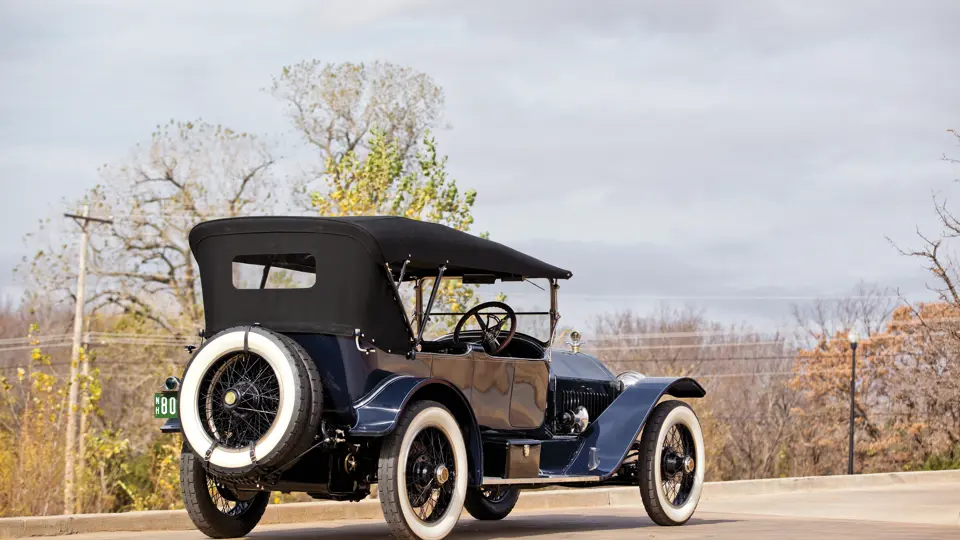
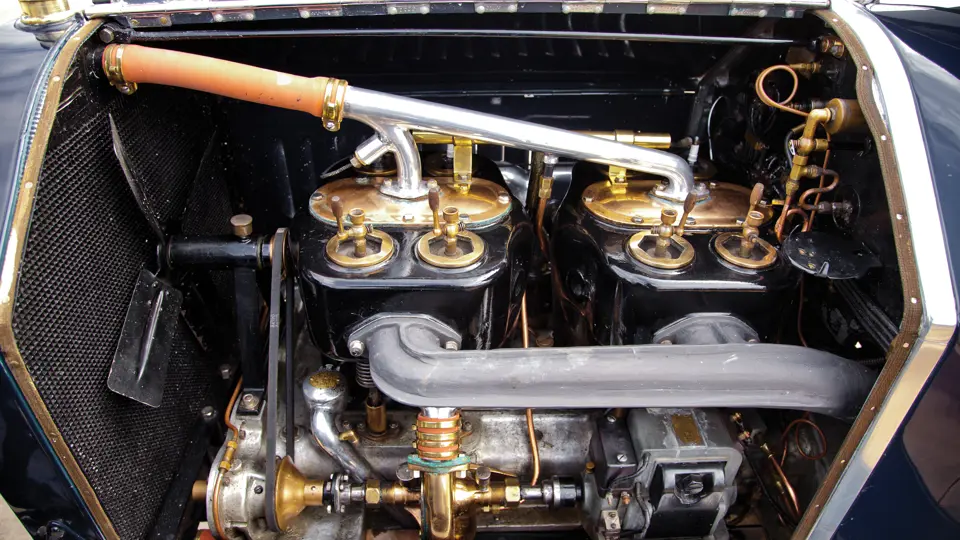


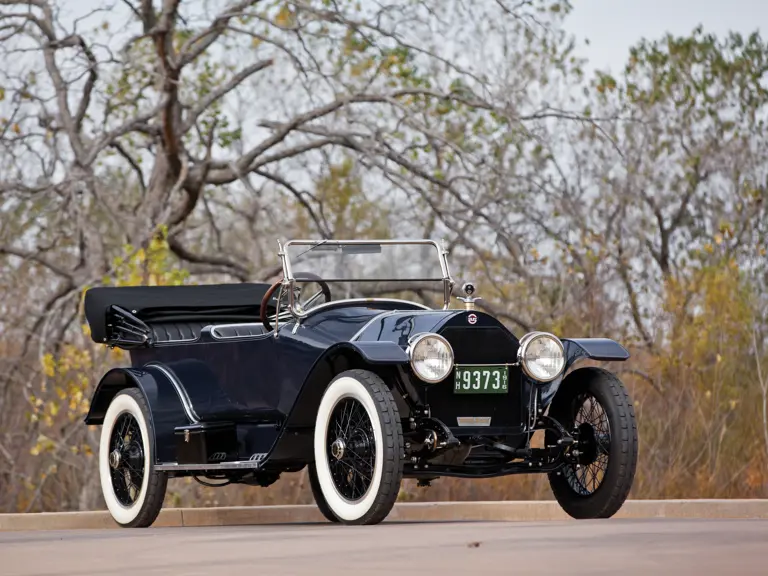
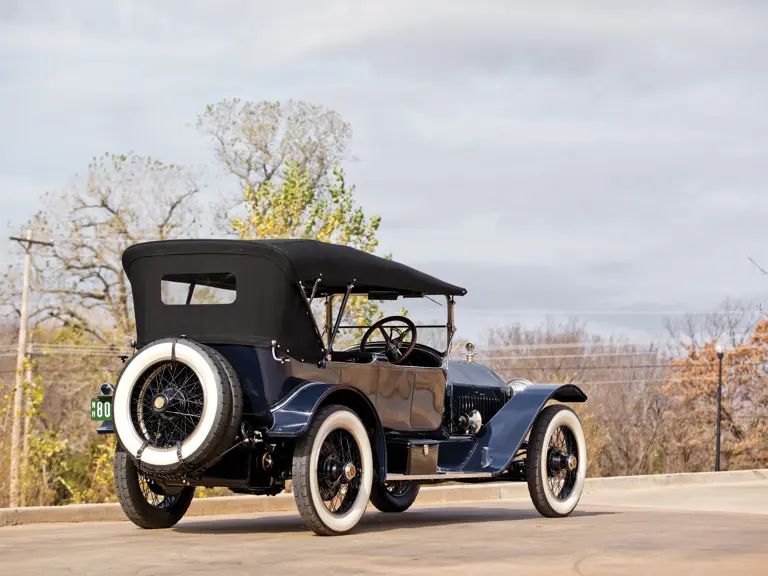
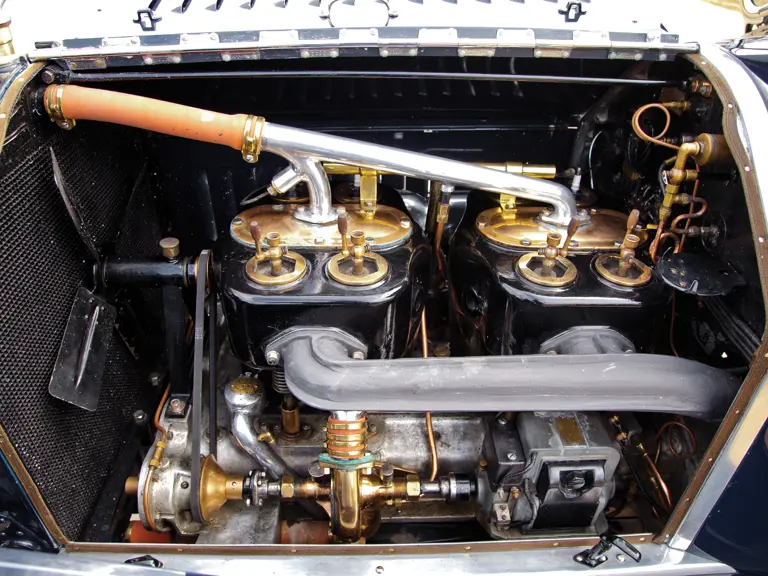
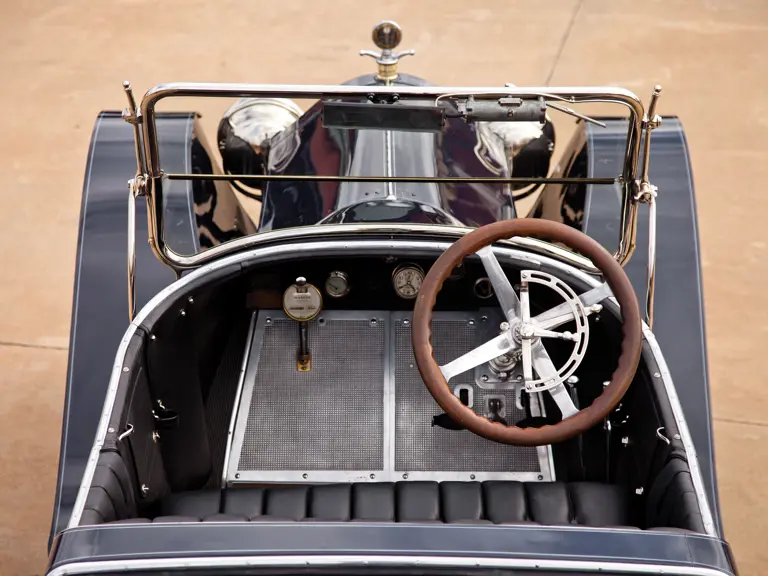
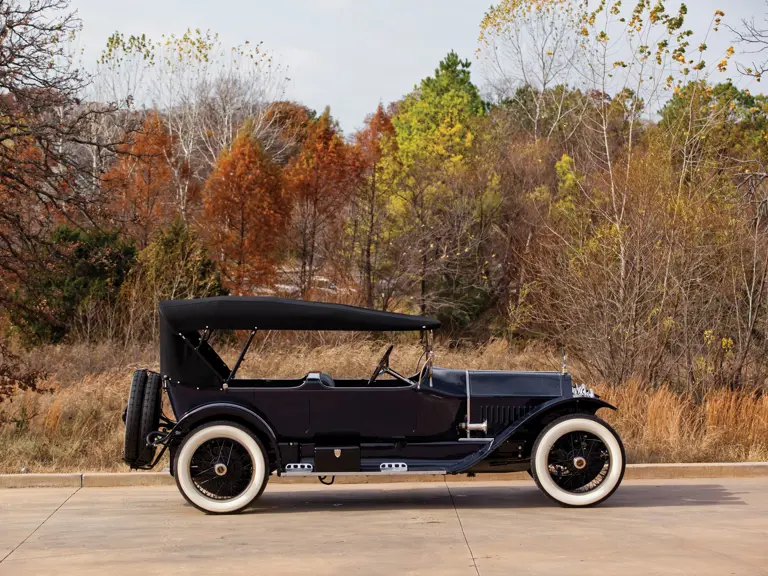
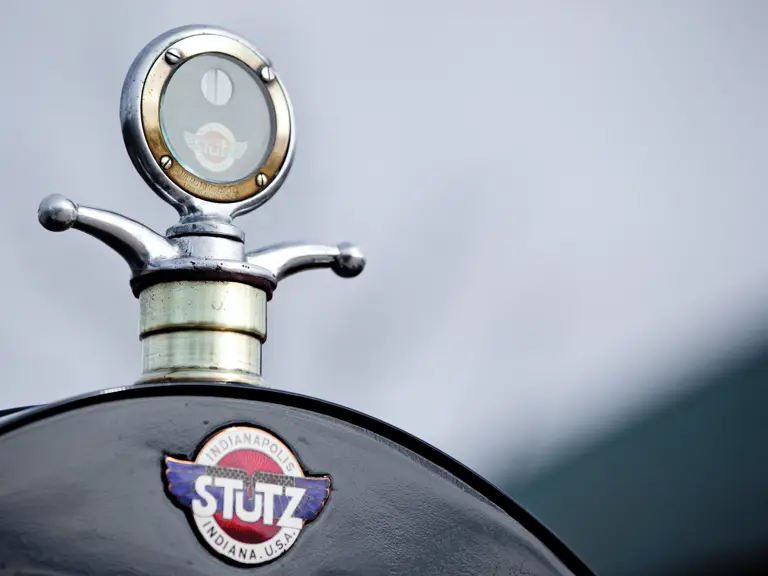
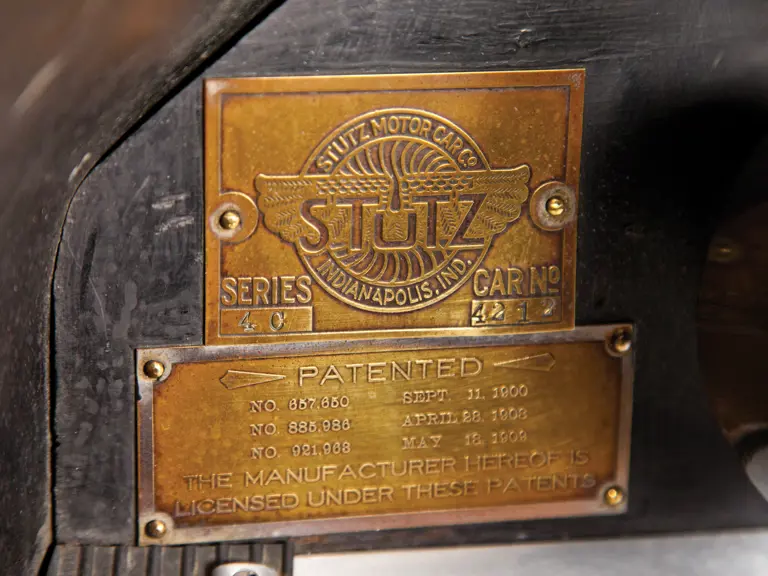
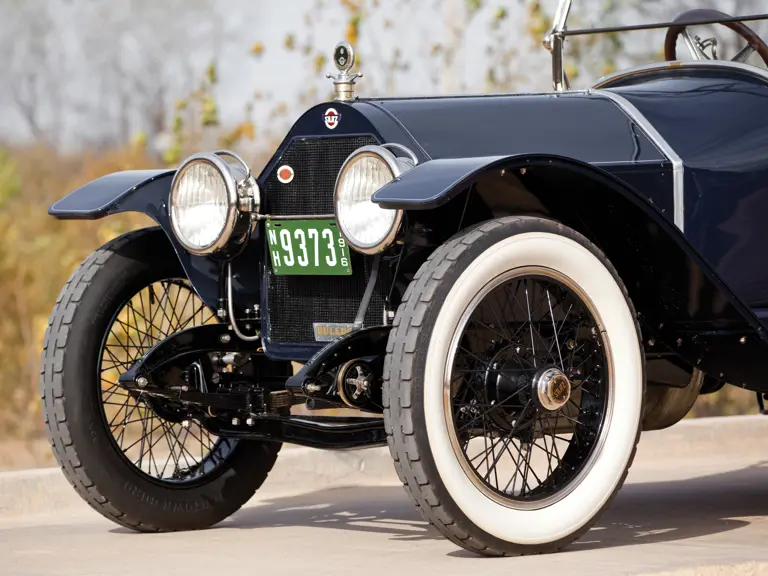
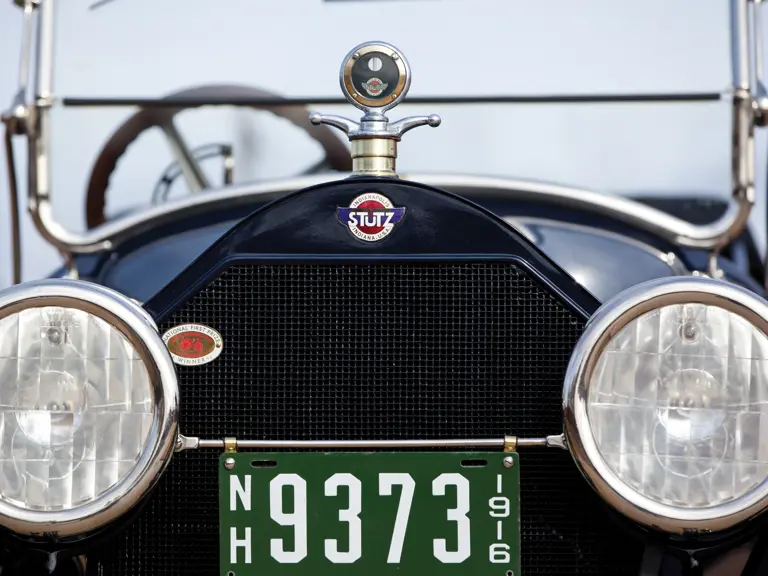
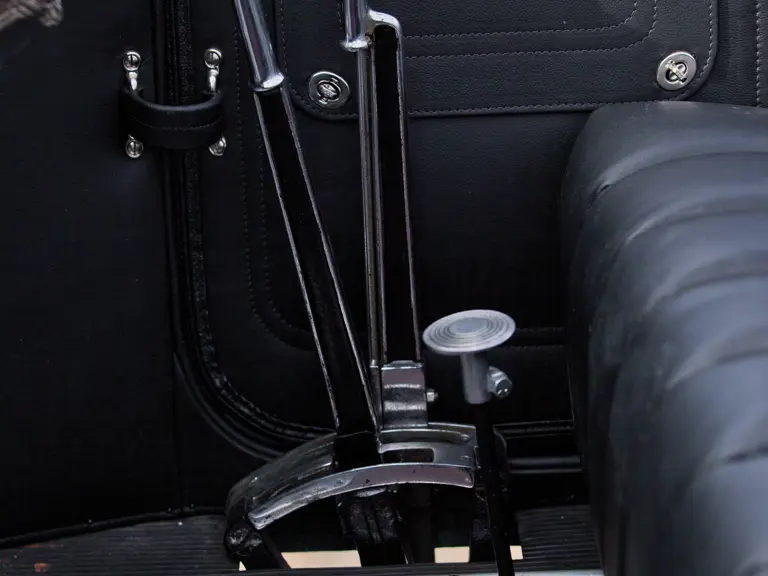
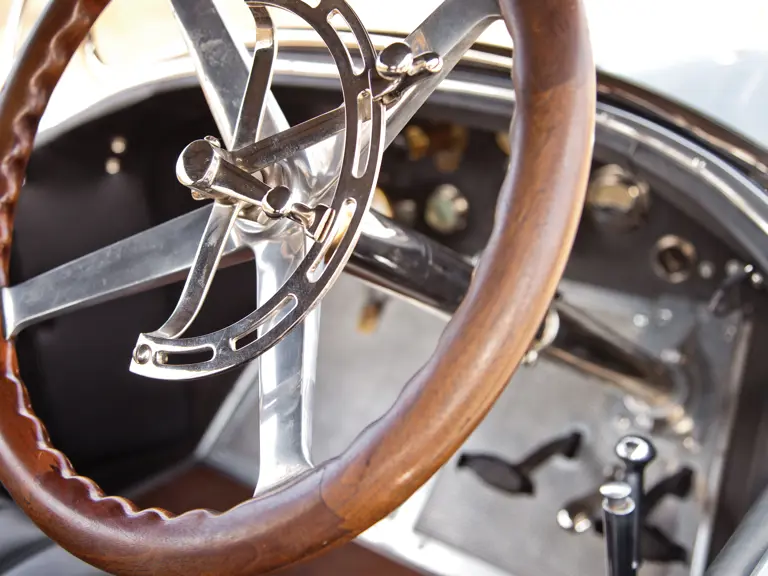
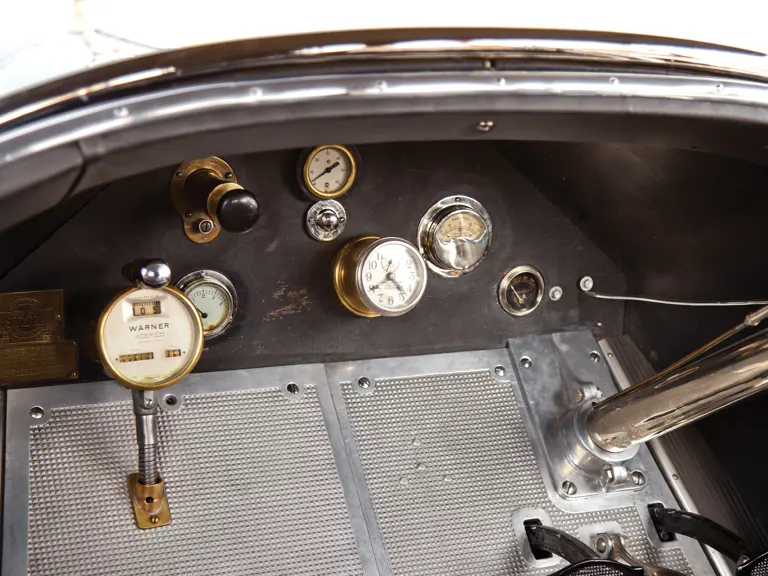
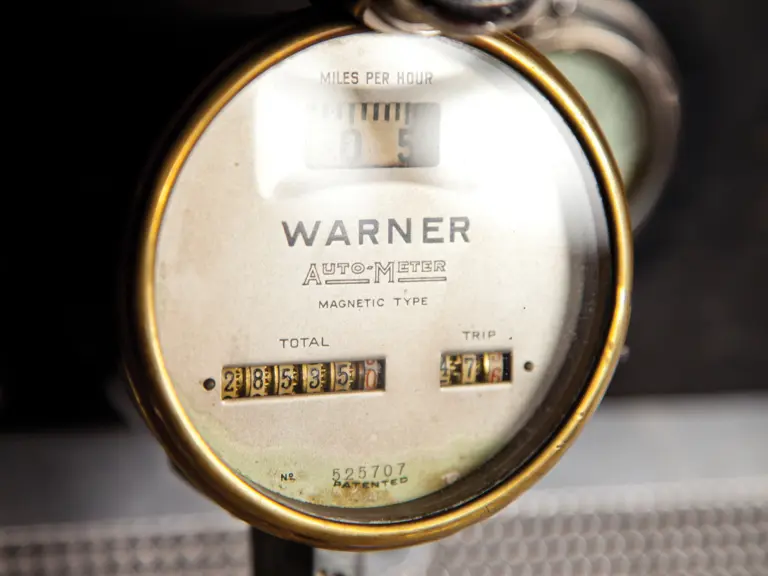
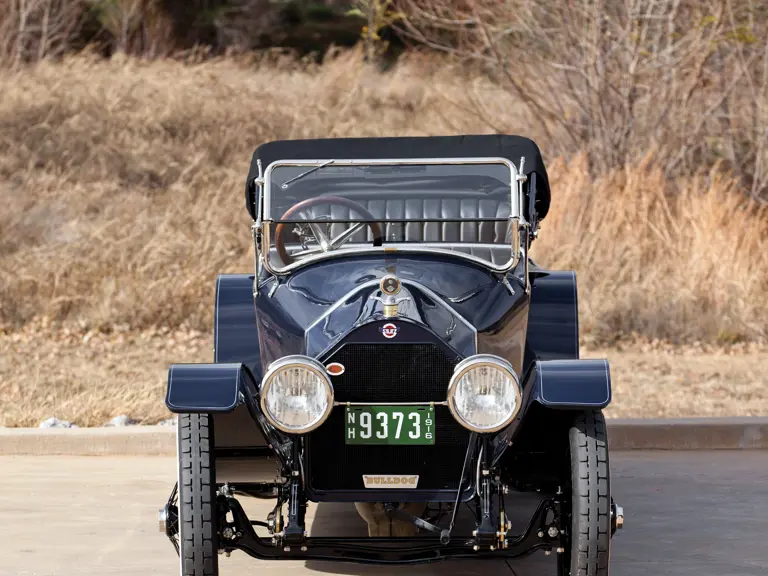
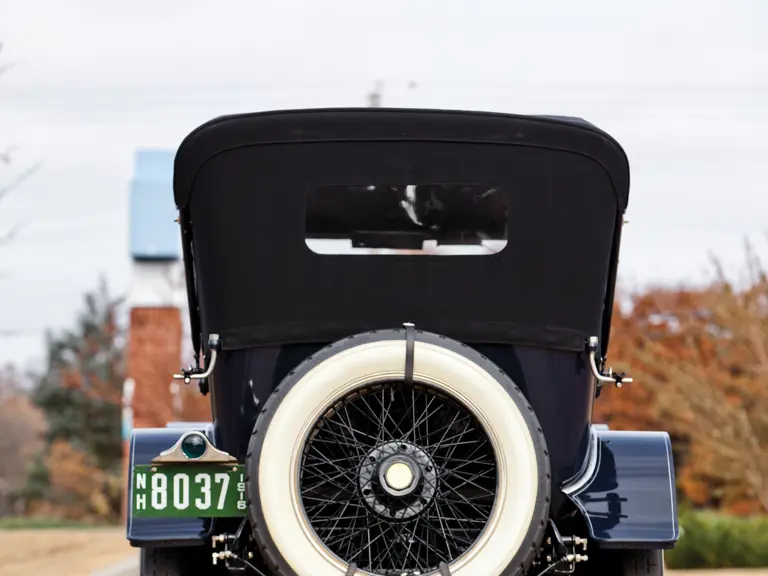
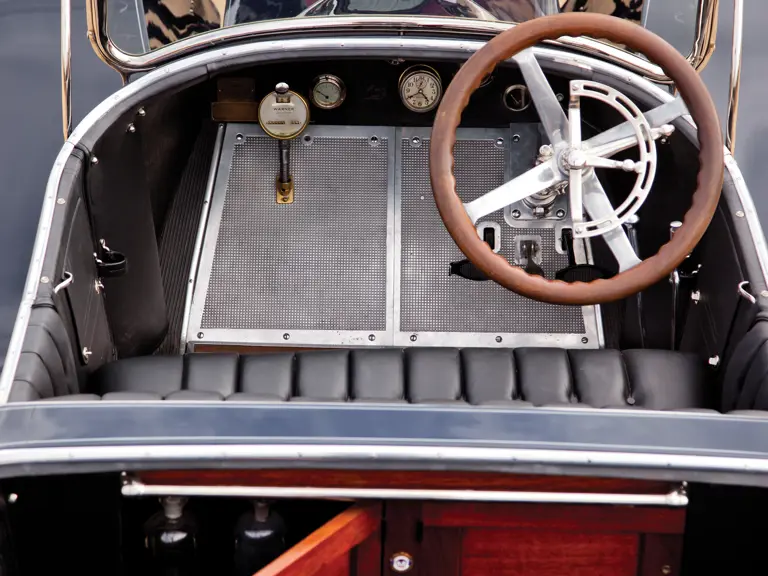
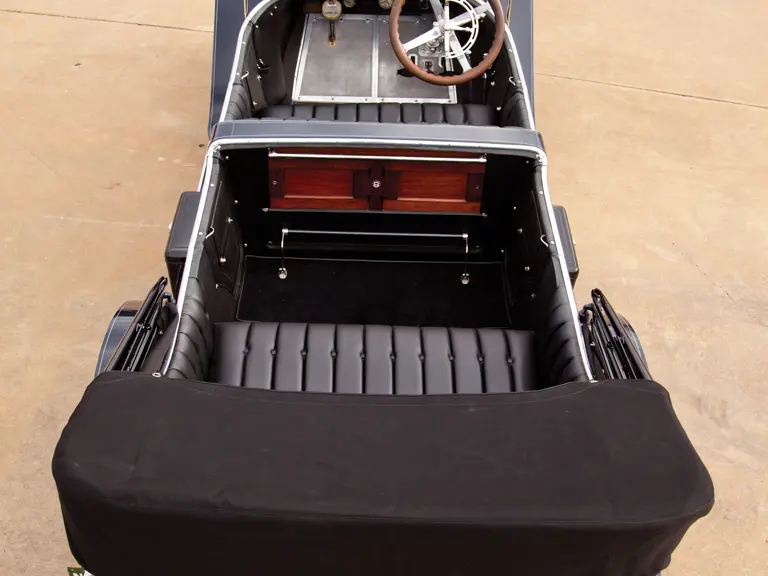


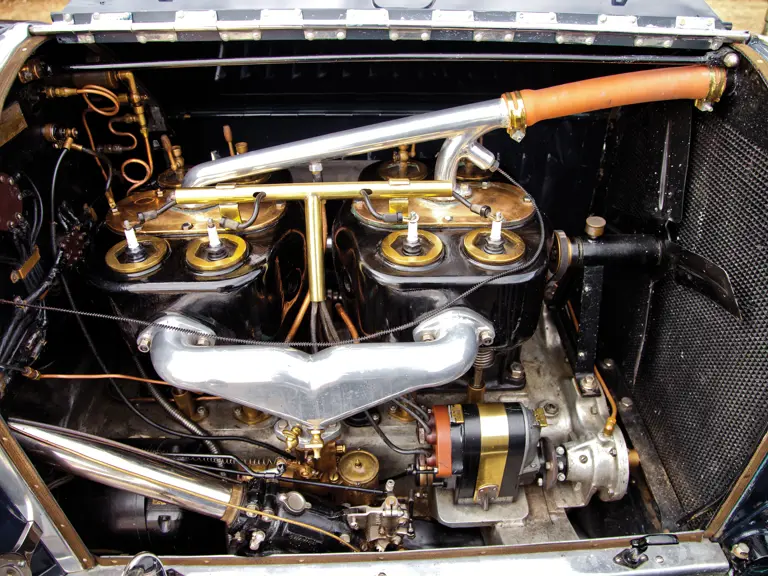

 | Phoenix, Arizona
| Phoenix, Arizona

